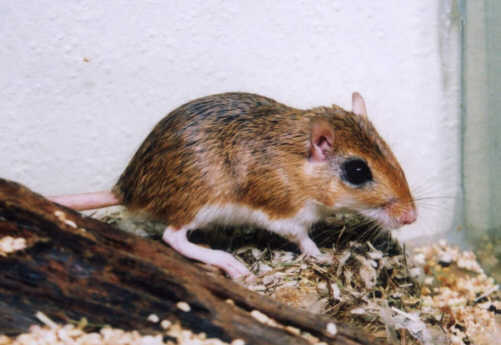


Owning... gerbils
Start here
Before buying gerbils, remember that it is your responsibility to care for them every day of their lives, which may be for up to 5 or 6 years.
Breeds


Colours
Golden Agouti, the only variety of Mongolian gerbil available in pet shops. A golden red with black guard hairs, a white tummy and black tail-tip. Black eyes, black and white whiskers and grey ears.
White Spot, a sandy coloured coat with a white spot on the nose, forehead and neck. White feet and a white tail-tip.
Pink-eyed White (Albino), pure white coat, pink eyes.
Dark-tailed White, similar to the albino but with a dark ridge across the tail, hence the name.
Argenti, golden all over with no guard hairs. White tummy and paws, red eyes.
Black, completely black, with black eyes and whiskers.
Dove, soft grey in colour with light grey whiskers and ears, red eyes.
Grey-bellied, a coat of any of the above colours but with a grey abdomen.
Dilute, the fur on the body is sandy-coloured, changing gradually to grey at skin level.
Choosing your gerbils
Any gerbils in a pet shop will be Mongolian gerbils, as these are the most common breed kept in captivity. Gerbils are social animals and must be kept in pairs. Two young littermates (of the same sex) are best - do not introduce two strange adults as there will be a fight. Gerbils should be bought when they are 4-6 weeks old, since they are fully weaned at this age.
When choosing gerbils, look for the following things:-
1. A clean nose free from mucous;
2. Clean, bright eyes with no discharge;
3. Straight teeth which are not visible when the mouth is closed;
4. Clean ears, covered with hair. Check for any discharge;
5. A smooth, shiny coat. Check for wounds or scabs;
6. A clean bottom, with no staining under the tail (this indicates diarrhoea).
Male or female?
There isn't much difference between the sexes. Males are larger than females. Always keep gerbils in same-sex pairs unless you intend to breed from them. Please do not breed gerbils unless you know exactly what you are doing and can provide homes for all the offspring.
Where should I get my gerbils from?
It is best to get gerbils from a reputable pet shop. They are sometimes available from rescue centres, but if you get rescue gerbils you cannot know their age or history - if they are over 1 year old and not tamed, you will have a hard time trying to handle them, and they may never become fully tame.
1. Mongolian gerbil (right), the most common breed. Its Latin name is "unguiculatus", which means "tooth and claw". The back, head, tail and limbs are covered with thick tawny fur with black guard hairs. The tummy and chest are completely white.
2. Jerusalem gerbils, are very similar to Mongolian gerbils but are slightly larger when mature. In the wild, they live in most of North Africa and as far east as Syria. As with other gerbils they live in burrows but lead a solitary life, only coming together to breed. They are a deep mahogany or dark grey in colour, with white tummies. They do not make very good pets, since they are difficult to tame and mainly nocturnal.
3. Egyptian gerbils make excellent pets. They are a deep twany red in colour, with a white tummy. Its tail is not as hairy as the Mongolian gerbil and lacks the bushy brush on the end. Its bones are much more delicate. They are sociable and should be kept in pairs.
4. Libyan gerbils are not often kept in captivity, since they are aggressive. They are the largest gerbils of the Meriones species, measuring up to 20cm in length. Its tail is completely hairless and also measures up to 20cm in length.
5. Indian gerbils (below left) are not suitable as pets. They are very nervous and will bite. One of the largest species of gerbil, up to 430mm long from head to tail-tip, they look more like mice than gerbils, with their huge eyes and hairless tails.
Egyptian gerbil ------
6. Afghanistan Red gerbils are similar in appearance to Mongolian gerbils, except they are a deep tawny red all over, with a stark white tummy. Although not commonly found in captivity, they can be tamed and make suitable pets.
7. Pampas gerbils live in South America, isolated from the normal gerbil range. They are quite small but extremely fast, and make good pets.
8. Namib Paeba gerbils (below) or "snow shoe" gerbils have spatula shaped back paws to help balance on the loose sand in the African deserts where they live. They have golden fur and a white tummy. The tail has a very thick brush. They are nocturnal and never venture out in the daylight.


Picture credits : Egyptian, Indian and Snow shoe : www.rodent.demon.co.uk/ gerbils/pyramid.htm
Mongolian: www.blueplanetbiomes.org/ mongolian_gerbil.htm
Site design and content © Charlotte Owen 2003